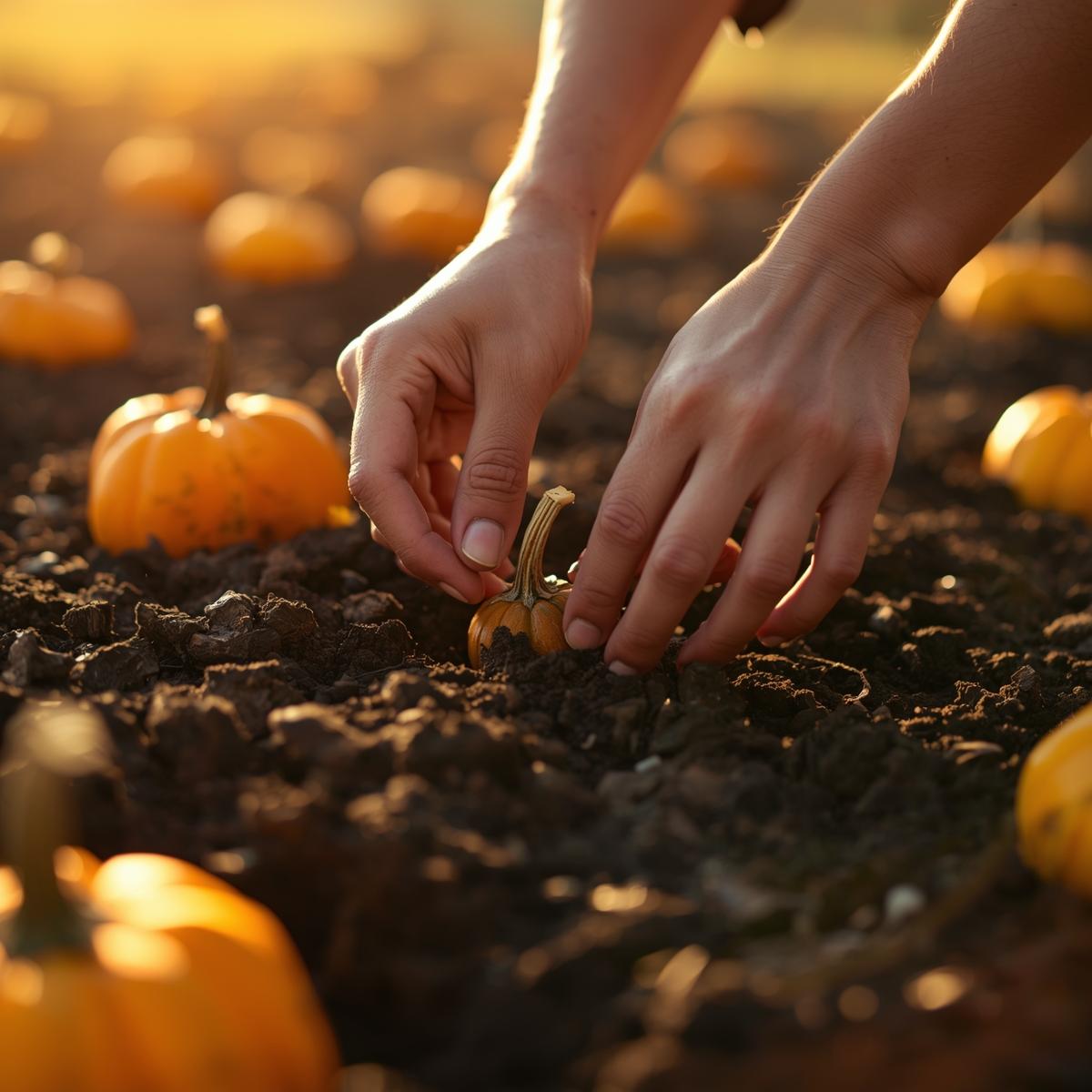From cozy fall decorations to homemade pumpkin pies, there’s something magical about growing your own pumpkins. Whether you’re a seasoned gardener or just starting out, learning how to plant pumpkins is one of the most rewarding gardening experiences you can have. These cheerful orange fruits (yes, pumpkins are fruits!) symbolize warmth, abundance, and the simple joys of nature.Ready to discover why everyone loves how to plant pumpkins — and how you can grow your own pumpkin patch that turns heads? Let’s dig in! 🍂🎃 The Joy of Growing PumpkinsThere’s a reason so many gardeners across the United States, United Kingdom, and Canada are obsessed with pumpkin planting. Pumpkins are not only fun to grow but also incredibly versatile.🌿 1. They’re Surprisingly Easy to GrowWith the right soil, sunlight, and care, pumpkins practically thrive on their own. Once they start vining, you’ll watch them take off — turning your garden into a lush, green adventure.🍰 2. Endless Culinary UsesFrom sweet pumpkin pies and spiced lattes to savory soups and roasted seeds, pumpkins are a kitchen superstar. Knowing how to plant pumpkins means you’ll always have a fresh supply for all your autumn recipes.🎨 3. Perfect for Fall DecorWho doesn’t love carving pumpkins, decorating porches, or arranging mini varieties as table centerpieces? A single harvest can give you months of festive charm.👨👩👧 4. Great Family ActivityKids love watching pumpkin vines grow and helping harvest the fruits. It’s a fun, educational, and hands-on way to connect with nature.🌱 How to Plant Pumpkins: Step-by-StepLet’s dive into the process — because once you know how to plant pumpkins, you’ll never want to stop!🪴 Step 1: Choose the Right VarietyPumpkins come in all shapes and sizes. Pick your favorite based on your needs:🎃 Jack O’Lantern: Classic carving pumpkin.🧡 Sugar Pie: Perfect for baking and cooking.🍂 Mini Pumpkins: Cute decorative varieties.🏆 Giant Pumpkins: Great for competitions or fun projects.🌞 Step 2: Pick the Perfect SpotPumpkins love full sunlight — at least 6–8 hours a day. Choose a sunny garden bed or patch with plenty of room for vines to sprawl (they can reach 10–20 feet long!).🌾 Step 3: Prepare the SoilHealthy soil = happy pumpkins!Use well-draining, rich soil with lots of compost or organic matter.Pumpkins prefer slightly acidic to neutral soil (pH 6.0–7.0).Create small mounds or hills about 12–18 inches apart to improve drainage and warmth.Add a layer of compost or aged manure before planting — your pumpkins will thank you with strong vines and large fruits.🌰 Step 4: Plant the SeedsNow for the exciting part — planting!Sow 2–3 seeds per mound, about 1 inch deep.Space mounds 3–5 feet apart (or more for large varieties).Keep the soil moist but not waterlogged.Once seedlings sprout (in about 7–10 days), thin them down to the strongest one or two plants per mound.💧 Step 5: Water and Feed RegularlyPumpkins are thirsty plants!Water deeply once or twice a week, especially during hot weather.Avoid overhead watering — wet leaves can lead to mildew.Fertilize every 2–3 weeks with a balanced organic fertilizer or compost tea.Pro Tip: Water at the base of the plant early in the morning for best absorption.🌼 Step 6: Support the VinesAs your pumpkin vines spread, you can gently guide them to prevent crowding. If space is limited, try vertical trellising for smaller varieties.Keep the area around your pumpkins weed-free, and add mulch to retain moisture and suppress unwanted growth.🐝 Step 7: Encourage PollinationPumpkins rely on bees and pollinators to set fruit. If you’re not seeing fruit develop, hand-pollinate by transferring pollen from male to female flowers with a small brush or cotton swab.Planting flowers like marigolds and zinnias nearby will also attract bees naturally.🍂 Step 8: Harvest Time!After about 90–120 days, your pumpkins will be ready to harvest. You’ll know they’re ripe when:The skin is deep orange (or the mature color for your variety).The rind feels hard and resists puncture with a fingernail.The vines start to dry and turn brown.Use a sharp knife or pruning shears to cut pumpkins from the vine, leaving a few inches of stem attached for longer storage.🧡 Pumpkin Planting Tips for SuccessWant to truly master how to plant pumpkins? Here are some quick hacks to boost your harvest:Warm soil = fast growth. Don’t plant too early in cold ground — wait until it’s at least 65°F (18°C).Feed with compost tea. It boosts nutrients naturally.Rotate crops yearly. Avoid planting pumpkins in the same spot as last year to prevent soil-borne diseases.Watch for pests. Check regularly for squash bugs, aphids, and cucumber beetles.Cure your pumpkins. Let them sit in a warm, dry spot for 10 days before storing — this toughens their skin for long-term use.🍰 Fun Uses for Homegrown PumpkinsAfter all that hard work, it’s time to enjoy your harvest!🎃 Carve them for Halloween or Thanksgiving decor.🍞 Bake them into breads, pies, or muffins.☕ Blend them into smoothies or lattes.🍲 Roast the seeds with salt or cinnamon sugar for a crunchy snack.🏡 Decorate your home with mini pumpkins for a rustic fall touch.Knowing how to plant pumpkins means you’ll never have to buy another store-bought one again — and yours will taste even better!🌻 Why Everyone Loves How to Plant PumpkinsThe secret behind why everyone loves this gardening adventure is simple: it’s rewarding, beautiful, and full of seasonal joy. Watching a tiny seed grow into a sprawling vine of vibrant orange pumpkins is pure magic. Whether you’re growing them for food, fun, or festive flair, pumpkins bring people together — one patch at a time.So grab your seeds, dig into the dirt, and discover the joy for yourself. Because when it comes to gardening satisfaction, learning how to plant pumpkins is one of the best experiences out there. 🌿✨

